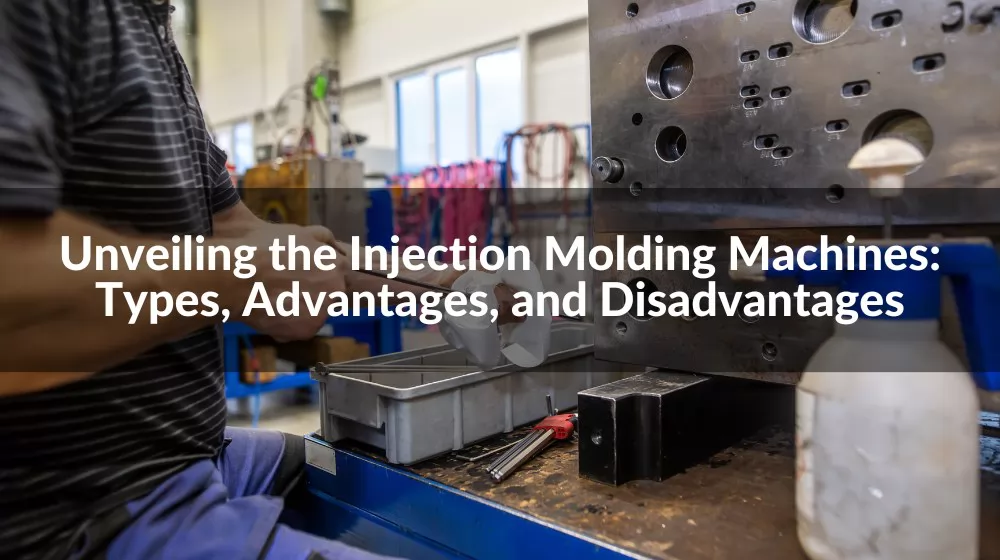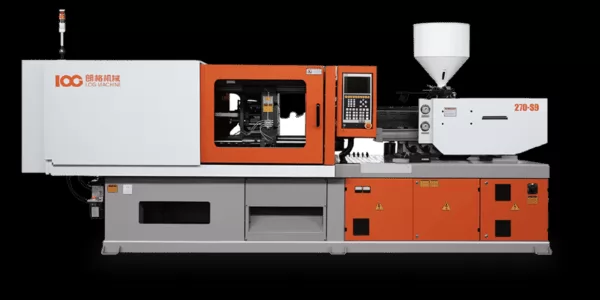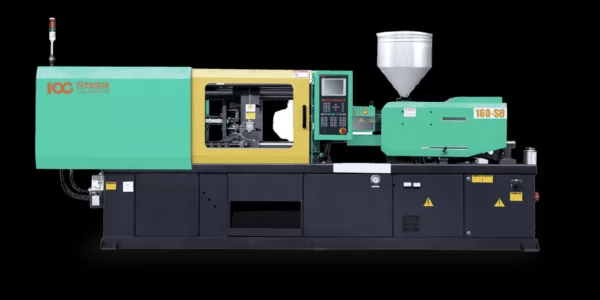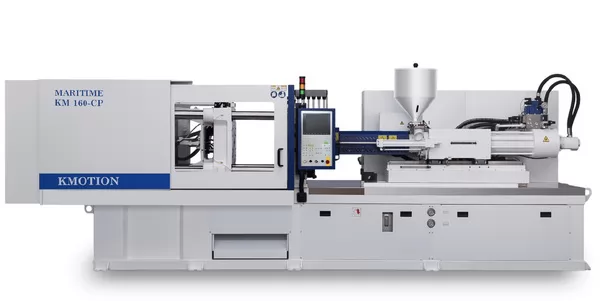
Welcome to the comprehensive world of injection molding machines, where precision, efficiency, and innovation meet to transform ideas into tangible products. In this guide, we delve into the intricacies of various types of injection molding machines, including hydraulic, electric, servo, and hybrid models, each designed to meet specific manufacturing needs. Whether you're a seasoned manufacturer or new to the plastic molding industry, understanding the capabilities and applications of different injection molding machines can significantly impact your production efficiency and product quality. Stay with us as we explore the critical aspects of injection molding technology, offering insights to help you make informed decisions for your manufacturing processes.
- Overview of Injection Molding
- Importance of Injection Molding in Manufacturing
- Part 1: Understanding Injection Molding Machines
- Part 2: Types of Injection Molding Machines
- Part 3: Selecting the Right Injection Molding Machine
- Part 4: Operational Considerations
Overview of Injection Molding
Injection molding stands as a cutting-edge, highly efficient process used for producing parts by injecting molten material into a mold. This technique is widely utilized across various industries, including automotive, medical, consumer goods, and more, primarily due to its versatility, efficiency, and ability to produce large volumes of high-quality parts. At the heart of this manufacturing process are the injection molding machines, which come in different types to meet diverse production needs. These include hydraulic injection molding machines, electric injection molding machines, and servo injection molding machines, each offering unique advantages and catering to specific manufacturing requirements. Understanding the fundamental aspects of injection molding is crucial for businesses looking to optimize their production lines, reduce costs, and enhance product quality. In this chapter, we will briefly introduce the essence and significance of injection molding, setting the stage for a deeper dive into the types of injection molding machines in subsequent sections.

Importance of Injection Molding in Manufacturing
Injection molding is not just a manufacturing process; it's a cornerstone in today's manufacturing sector. Its importance cannot be overstated, as it impacts various aspects of production and market delivery. Firstly, this method allows for the mass production of parts with consistent quality, which is vital for industries requiring uniformity such as automotive and healthcare. Secondly, injection molding is renowned for its efficiency and speed, significantly reducing the time from design to product, which is crucial in maintaining competitive edges in fast-paced markets.
Furthermore, the versatility of injection molding means it can handle a wide range of materials and complex shapes, making it indispensable for creating components in consumer electronics, packaging, and other sectors. The process also supports sustainable manufacturing practices by allowing the use of recycled materials and reducing waste. By integrating types of injection molding machines like hydraulic, electric, and servo, manufacturers can optimize their operations for energy efficiency, precision, and cost-effectiveness. In essence, the role of injection molding in manufacturing is pivotal, as it enables the production of high-quality, intricate parts at scale, fostering innovation and growth in various industries.
Part 1: Understanding Injection Molding Machines
Basics of Injection Molding Machines
At the core of the injection molding process lies the injection molding machine, a powerful tool designed to transform raw plastic materials into finished products with precision and efficiency. Essentially, these machines work by melting plastic granules and injecting the molten plastic into a mold under high pressure. Once the plastic cools and solidifies, the part is ejected, resulting in a high-quality product ready for use or further processing. The versatility of injection molding machines allows them to be used for a variety of materials, including thermoplastics, thermosets, and elastomers, making them integral to the manufacturing lines of countless industries.
Definition and Function
An injection molding machine is a device used to fabricate plastic parts through the injection molding process. It consists of two main parts: the injection unit and the clamping unit. The injection unit is responsible for heating the plastic and injecting it into the mold cavity, while the clamping unit is responsible for holding the mold in place during the injection and cooling processes. Together, these units perform the critical functions of melting, injecting, and cooling the plastic to form complex shapes with excellent surface finishes.
Core Components of Injection Molding Machines
Understanding the core components of injection molding machines is essential for optimizing manufacturing processes. Key components include:
- The hopper, where raw plastic material is loaded and fed into the machine.
- The heating barrel, equipped with a reciprocating screw, where the plastic is melted.
- The injection nozzle, through which the molten plastic is injected into the mold.
- The clamping unit, which holds the mold in place during the injection and cooling phases.
- The hydraulic system, which powers the clamping and injection processes in hydraulic injection molding machines.
- The electric drive, which controls the precision and movements in electric injection molding machines.
- The control panel, which allows the operator to set and monitor all machine parameters for optimal performance.

Part 2: Types of Injection Molding Machines
A. Hydraulic Injection Molding Machines
Description and Operating Principle
Hydraulic injection molding machines are powered by hydraulic fluid, which is used to pressurize the injection molding process. These machines are known for their ability to apply high clamping force, and they have been the standard in the industry for many years. The hydraulic system controls the movement of the mold and the injection of the plastic through a series of pumps and valves, enabling precise control over the molding process.
Advantages of Hydraulic Machines
Hydraulic injection molding machines offer several advantages, including strong clamping force, which is essential for producing large or deep parts. They also provide flexibility in terms of pressure and speed adjustments, making them suitable for a wide range of materials and applications. Their robustness and long lifespan make them a cost-effective choice for many manufacturers.
Disadvantages of Hydraulic Machines
However, hydraulic machines have their drawbacks, including higher energy consumption compared to other types of injection molding machines. They can also be more prone to fluid leaks, which can lead to maintenance issues and environmental concerns. The slower response time in the control of the mold opening and closing can also affect cycle times and productivity.
B. Electric Injection Molding Machines
Description and Operating Principle
Electric injection molding machines use electric motors to drive all the movements of the machine, including injection, clamping, and ejection. This results in more precise, clean, and energy-efficient operation. The use of servo motors and advanced control systems allows for greater control and faster response times compared to hydraulic systems.
Advantages of Electric Machines
The main advantages of electric injection molding machines include higher energy efficiency, greater precision and repeatability, and reduced cycle times. They operate more quietly and require less maintenance than hydraulic machines, offering a cleaner and more user-friendly working environment. Additionally, they are better suited for producing parts with tight tolerances and intricate geometries.
Disadvantages of Electric Machines
On the downside, electric injection molding machines tend to have a higher initial cost than hydraulic machines. They may also have limitations in terms of the size and clamping force available, which can restrict their use in manufacturing large or highly detailed parts.
C. Hybrid Injection Molding Machines
Description and Operating Principle
Hybrid injection molding machines combine the best features of hydraulic and electric systems. They use a hydraulic system for generating high clamping forces and an electric system for injection and other movements, providing a balance between performance and energy efficiency.
Advantages of Hybrid Machines
These machines offer the high clamping force and robustness of hydraulic machines along with the precision, energy efficiency, and speed of electric machines. This makes them highly versatile and suitable for a wide range of applications, from large automotive parts to intricate medical devices.
Disadvantages of Hybrid Machines
However, hybrid machines can be more complex and expensive than single-system machines. They also require a higher level of maintenance due to the presence of both hydraulic and electric components.
D. Vertical Injection Molding Machines
Description and Operating Principle
Vertical injection molding machines have a vertical clamping unit, which allows for the placement of molds and injection from the top. This configuration is particularly useful for insert molding and allows for a smaller footprint compared to horizontal machines.
Advantages of Vertical Machines
One of the key advantages of vertical injection molding machines is their suitability for insert molding and overmolding. They also offer better ergonomics for operators and facilitate the production of parts with more complex designs. The vertical layout helps in reducing the machine's floor space requirement.
Disadvantages of Vertical Machines
However, they can be less efficient in terms of productivity compared to horizontal machines, as the vertical clamping mechanism can limit the speed of operation. They may also require manual intervention for part removal, which can increase cycle times.
E. Other Specialized Injection Molding Machines
Beyond the conventional types, there are specialized injection molding machines designed for specific applications:
- Multi-Material Injection Molding Machines: These allow for the injection of multiple materials into a single mold, enabling the production of complex parts with different properties or colors.
- Micro Injection Molding Machines: Designed for producing very small parts with precision, these machines are ideal for medical, electronics, and micro-mechanical components.
- Others (Rotary, Shuttle, etc.): These include machines with rotary tables or shuttle mechanisms, offering advantages in terms of productivity and flexibility for certain types of products.

Part 3: Selecting the Right Injection Molding Machine
A. Factors to Consider
Product Requirements
When selecting an injection molding machine, the first step is to consider the product requirements. This includes the size, geometry, and complexity of the parts being produced. Certain machines are better suited for intricate designs or larger parts, so understanding your product's specific needs is crucial.
Material Compatibility
Different injection molding machines are optimized for different materials. Whether you are working with thermoplastics, thermosets, or elastomers, the machine you choose must be compatible with the material's properties, including melting temperature and abrasion resistance.
Production Volume and Efficiency
Consider your production volume and efficiency needs. High-volume production lines may benefit more from electric or hybrid machines due to their faster cycle times and energy efficiency, while lower-volume productions might find hydraulic machines more cost-effective.
B. Comparison and Contrast
Comparing Machine Types for Specific Applications
It's essential to compare and contrast the different types of injection molding machines for specific applications. For example, electric machines may be the best choice for high-precision, high-volume production of small to medium-sized parts, while hydraulic machines may be better suited for larger, less complex parts or materials that require higher clamping forces.
Cost-Benefit Analysis
Performing a cost-benefit analysis is crucial when selecting an injection molding machine. Consider not only the initial investment but also long-term costs such as energy consumption, maintenance, and machine lifespan. Also, factor in the potential for downtime and the efficiency of different machine types in your specific production environment.
Part 4: Operational Considerations
A. Maintenance and Care
Routine Maintenance Requirements
Proper maintenance is crucial for the smooth operation and longevity of injection molding machines. A robust maintenance schedule should encompass various checks and procedures, such as inspecting for hydraulic fluid leaks, assessing the condition of seals and hoses, and ensuring that all electrical connections are secure. Regular lubrication of moving parts to prevent wear and tear, cleaning of the hopper and the surrounding area to avoid contamination, and inspection of the heating elements to ensure consistent temperature control are also essential. Establishing a preventive maintenance program can help avoid unexpected downtime and extend the life of the machine.
Common Issues and Troubleshooting
Operators may encounter various issues such as material leakage, uneven product quality, or mechanical failures. To address these challenges, a systematic approach to troubleshooting is necessary. This might include reviewing machine settings against standard parameters, examining the quality of the raw material, and checking the condition of the mold. For more complex problems, consulting with technical support or referring to the machine’s troubleshooting guide can provide guidance. Regular training for operators on the latest troubleshooting techniques can also help minimize machine downtime and improve productivity.
B. Safety and Environmental Considerations
Safety Protocols and Best Practices
Ensuring the safety of operators is paramount in the operation of injection molding machines. Implementing comprehensive safety protocols, such as enforcing the use of personal protective equipment (PPE), conducting regular safety training sessions, and maintaining clear signage and floor markings, is essential. Additionally, incorporating safety features into the machinery, such as emergency stop buttons, safety guards, and sensors, can help prevent accidents. Regular safety audits and risk assessments can identify potential hazards and lead to the implementation of corrective actions to maintain a safe working environment.
Environmental Impact and Sustainability Efforts
The environmental impact of injection molding operations is a growing concern. To address this, manufacturers can adopt measures such as utilizing recycled materials, optimizing machine settings for energy efficiency, and implementing waste reduction programs. Advancements in technology have led to the development of more energy-efficient injection molding machines, which not only reduce the carbon footprint but also lower operating costs. Additionally, companies can engage in sustainability programs, such as ISO 14001 certification, to demonstrate their commitment to environmental stewardship. By taking proactive steps towards sustainability, manufacturers can contribute to a greener future while also enhancing their market competitiveness.
the Future of Injection Molding with Log Machinery
In conclusion, the world of injection molding is diverse and filled with opportunities for innovation and growth. As we've explored the various types of injection molding machines, from the robust hydraulic models to the precision-driven electric units, it's clear that the right equipment can dramatically enhance your production capabilities. For those looking to embrace the future of injection molding, Log Machinery stands as a leading manufacturer, offering a wide range of top-tier injection molding machines designed to meet the demands of modern manufacturing. Visit our global website at https://www.log-machine.com/ to explore our innovative solutions and find the perfect match for your production needs. Embrace the future of manufacturing with Log Machinery, where quality meets innovation.




